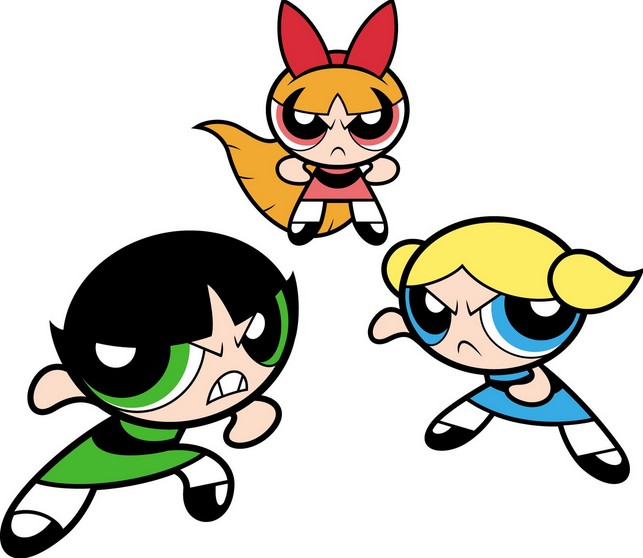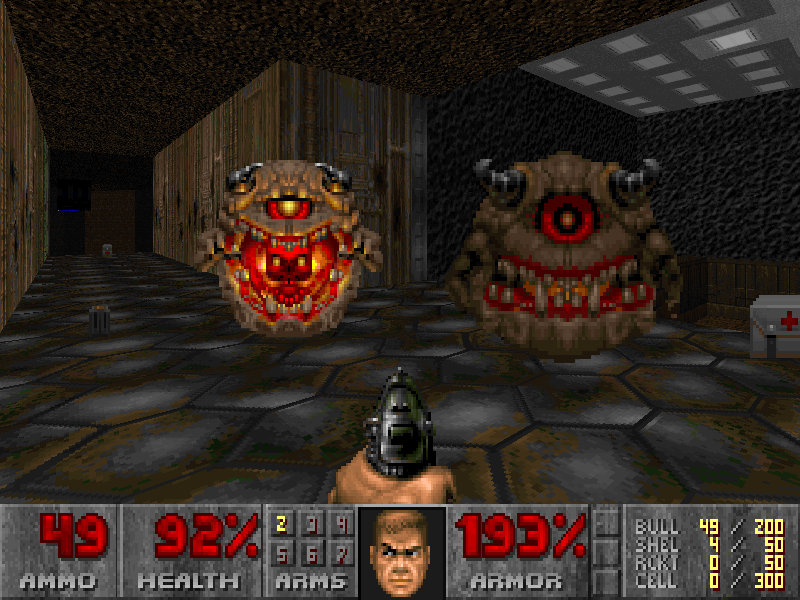 Humanity’s most pointless endeavor: trying to get girls to like boy stuff. At least Prometheus is getting some acupuncture out of his deal. At least Sisyphus is getting in a workout.
Humanity’s most pointless endeavor: trying to get girls to like boy stuff. At least Prometheus is getting some acupuncture out of his deal. At least Sisyphus is getting in a workout.
In 1973, Playgirl was conceived as a female-friendly riposte to male-aimed porn magazines. The magazine ended up with a loyal readership…of gay men.
In 1998, Powerpuff Girls was launched as an action-focused cartoon that gave girls butt-kicking role models. By 2002, 70% of its TV audience was male.
More recently, girl-aimed My Little Pony attracted a rather odd male fanbase that disturbs Lauren Faust and almost everyone who works on the show. (I’m trying to find that Tara Strong twitter reply where she say something like “no, you can’t have sex with an animated horse”)
I think a lot of people who work in TV have the arrogant belief that they’re the shapers of public taste. When f*m*n*sts get involved, that manifests as ideas that media is brainwashing young girls, and that girls only play with Barbie because they we didn’t give them Gina Rinehart dolls, or something. If girls seem any different to boys, it’s the fault of TV shows and toy companies. We’ve gotta fix this right now. No more pink toys. No more girls shows that focus on romance.
All such attempts fail, but let’s assume the premise is correct. If young minds are malleable to such a degree, why stop there? We could easily be building a race of superhumans.
Lovable “slacker” characters should be banned from TV. Seriously. They’re clearly a bad influence. No more Homer Simpson or Beavis and Butthead. All TV characters should be type-A overachievers who go to church and never forget to call their mothers. We’ve got impressionable young brains watching this stuff, and we can’t allow them to be lead astray.
No more villains and crimes depicted on TV, either. Maybe we should have Batman putting the fear of God into people who pick their nose or chew with their mouth open. Obviously TV is the fount of all human behavior, so if we accomplish this we can eradicate crime in one generation. That was easier than I thought.
Obviously, humans have no biological limitations, it’s all cultural. TV has to teach kids to dream big. We should show crippled kids NBA matches, and triathlons. Maybe it will motivate them to be less crippled. It’s worth a try, surely.
(I’ve noticed though, that nobody gives much of a damn about negative stereotypes about boys. Nobody thinks Beavis and Butthead is a misandrist conspiracy to discourage boys from being ambitious. They flip shit when Barbie says “math is hard”, though. I agree with Barbie. Math is hard.)
No Comments »
 “Sarcastrophe” is a good start. Hard to be negative about “The Negative One”. “Custer” made me giggle.
“Sarcastrophe” is a good start. Hard to be negative about “The Negative One”. “Custer” made me giggle.
On the whole, Slipknot do very little good here. They were always Insane Clown Posse with guitars, so I’m glad they’ve reverted to the fruity, unpretentious style of S/T thru to Vol 3 (or perhaps you’d prefer to hear their opinions about the Iraq war). But the songs aren’t catchy or interesting. This is a big problem.
Most of them ride predictable Machine Head-inspired groove riffs and double bass flurries – this is the type of album that make you feel like a sorcerer because you can predict exactly what will come next. Others attempt emotion and land with a splash in boredom.
“Approaching Original Gayness” (or whatever) sounds like “Before I Forget” with a sugary clean-sung chorus tacked on in a way that doesn’t make sense. Lead single “The Devil in I” starts out with an animated uptempo riff, then slows down and immediately starts spiralling the toilet. Boring idea after boring idea. I hate this song.
“Skeptic” is a tribute to bassist Paul Gray, who recently caught a bad case of dead. It has a cute chorus and not much else. “Goodbye” is long and tedious, speeding up and slowing down seemingly at random. If this song was an actual “goodbye” it would be an unwanted houseguest you’re trying to shoo out and who keeps trying to tell you his life story. Shut up already. Save it for your memoir. No, I won’t read it there, either.
At times the album barely sounds finished. The songs change from section to section haphazardly, and the tracklisting induces further whiplash. “Custer” and “The Negative One” have a nearly identical screech sample and a similar breakdown chorus…and they’re separated by just a 2 minute interlude. It’s like listening to the same song twice.
The occasional interesting riff and energetic moment keeps things moving forward and patches over the bad moments somewhat. This is their first album without Joey “needs a stepping stool to reach the drumkit” Jordison, which was a turn for the better. Judging from Scar the Martyr, he was responsible for the band’s self-serious period. But the band doesn’t exactly return to form, either, mostly because Slipknot never really had a “form” to return to.
A few entertaining moments. At least 40 minutes of narcolepsy inducing crap. All hail Slipknot.
No Comments »
 Wanna live dangerously? Play a PC game from 1990-1995 that has “2” in the title.
Wanna live dangerously? Play a PC game from 1990-1995 that has “2” in the title.
Companies used to have almost no idea of what a sequel to a computer game should look like. Should they be like level packs? Should they be entirely new games? The “shareware” model further complicated things – you’d have part 1, the free version, and parts 2 and 3, which you paid for. Publishers were cutting up and slicing games like lunatic sushi chefs, and “sequel” could mean absolutely anything.
Doom 2 was part of the problem. It has 32 new levels, one new weapon, and a few new enemies. Do you call that a sequel? I call it a glorified level pack. Some accountancy particulars set Doom 2 apart from the original (chiefly the fact that it was sold in stores rather than through mail-order), but so what? Imagine if Street Fighter II was Street Fighter I with a new character and some new backgrounds. You’d call shenanigans.
The new weapon is the super shotgun. It’s very satisfying to clear a room of zombies in one blast, but it disrupts the balance of the game. It’s just too effective – you never again use the regular shotgun, so why still have it in the game? (Yes, the shotgun has a tighter spread and is better for long-range fighting, but the chaingun’s better in that category).
The new enemies are a little mixed. The pain elementals and revenants are just tedious and annoying, no fun to fight. The chaingun zombies are neat. The arch-vile is the most inspired creation: a “healer” that can revive dead enemies. All the old enemies are back, including a fair few cyberdemons. At one point you have to face a cyberdemon and mastermind at the same time (the battle becomes anticlimactic when you realise you can trick them into killing each other).
The new levels are the meat of the game. Most of them are either designed by Romero or Peterson. Romero’s levels are aesthetically beautiful, and actually evoke the feeling that you’re in hell. Peterson’s are ugly, slapdash, and gimmicky. The contrasting approach to level design gives the game a bipolar feel – Romero actually gets what Doom’s about (bringing the atmosphere of a Cronenberg film to your computer screen), while Peterson is intent on dragging id Software back to the arcades.
There’s not much to say about Doom 2. If you liked the original game, this has more of the same. But it doesn’t push the envelope. The envelope remains super-glued to the table. If you’re new to the series, you might as well start with Doom 2. Once you have the super shotgun, it’s awfully hard to play a game without it.
But normally the genre-defining classics and the cheap cash-ins are made by different people. Who would have thought that in this case they’d be coming from the same studio?
No Comments »
 Humanity’s most pointless endeavor: trying to get girls to like boy stuff. At least Prometheus is getting some acupuncture out of his deal. At least Sisyphus is getting in a workout.
Humanity’s most pointless endeavor: trying to get girls to like boy stuff. At least Prometheus is getting some acupuncture out of his deal. At least Sisyphus is getting in a workout.

